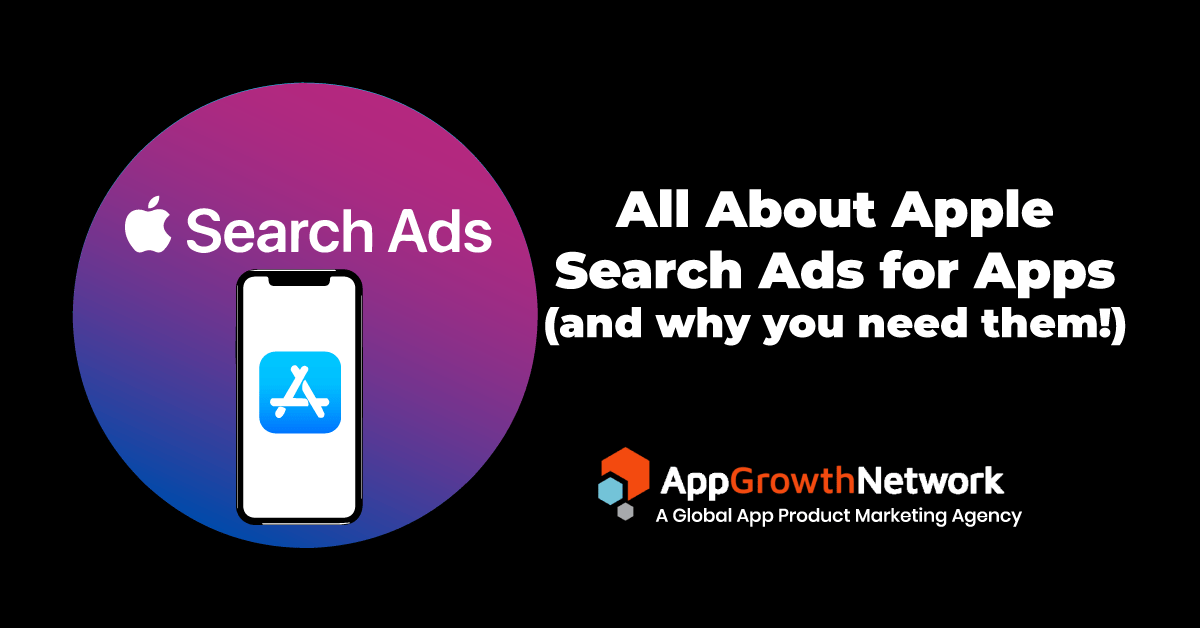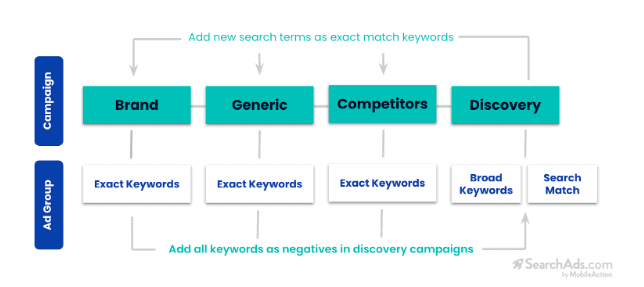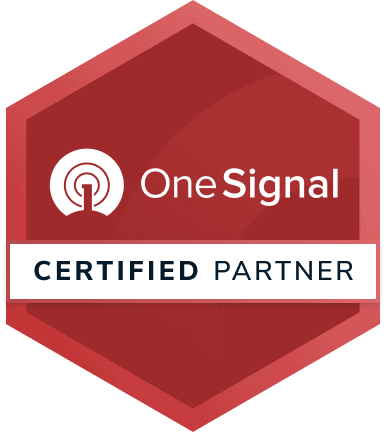All About Apple Search Ads for Apps (and why you need them!)
With iOS14 updates upon us, mobile app marketers around the world are bracing themselves for the change. The truth is, nobody really knows how and to what extent the changes will impact the industry. But, one thing’s for sure, iOS app advertisers are zeroing in on Apple Search Ads. Apple will be the only provider that will have legal access to user data and will be able to provide algorithmic targeting so, naturally, mobile advertisers will be upping their ASA game.
Our friends at SearchAds.com agree: “As the platform allows advertisers to reach users who already intend to download an app, Apple Search Ads is increasing its authority as a mobile ad network every day. With the upcoming IDFA deprecation and the rise of SKAdnetwork, we expect that the adoption of Apple Search Ads will increase tremendously.”
But even before iOS14 and all the frenzy it’s caused in the world of mobile app attribution and advertising, we’ve always been big fans of Apple Search Ads—which is why we’ve become ASA experts and have learned how to make the channel work for our clients.
Here, we’d like to share a bit of our know-how and provide some tips on how to get ASA right and why you need to.
- Apple Search Ads Success Story
- What are the benefits of Apple Search Ads
- How to set up an Apple Search Ads Campaign
- Apple Search Ads Best Practices Final Thoughts
What you’ll learn in this Article
Apple Search Ads Success Story
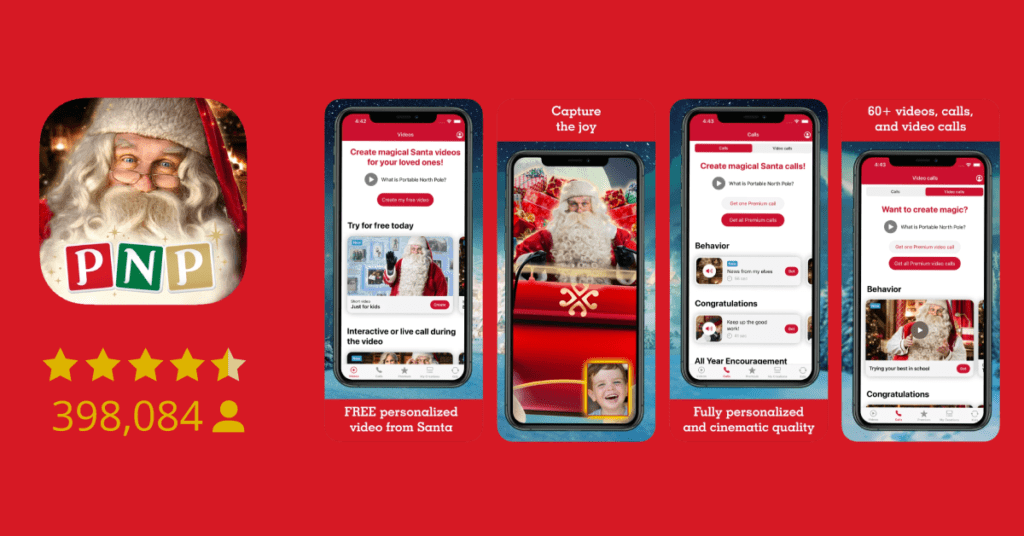
Let’s start with a success story because what better way to highlight the “why?” behind Apple Search Ads than with results!
Our client, Portable North Pole, is a Christmas app with over 10 million downloads that gives families around the world the ability to send magical personalized videos and live calls from Santa Claus. Our challenge was to launch and scale high-performing campaigns globally and acquire new users in more than 20 countries, in four different languages – keeping in mind that it’s a seasonal app, so the window of opportunity is limited.
So, what did we do? One big piece of our solution strategy was Apple Search Ads.
We followed ASA best practices (which we get into detail below) and focused on maximizing efficiency. A great way to do this is through automation— we used the automation tool SearchAds.com by Mobile Action. As an Apple Search Ads Campaign Management service, it’s possible to scale your campaigns more efficiently by using this platform. It allowed us to manage keywords in bulk, set up automated rules and alerts about budget changes, automatically adjust bids, and pause keywords to optimize campaign performance. Having these capabilities was huge in saving us valuable time and streamlining the ad performance optimization process.
The results?
Portable North Pole increased their app downloads by 220% from non-branded terms and improved their conversion rate by 15%!
What are the benefits of Apple Search Ads?
Get top visibility in App Store Search
Given that half of users find apps through an app store search, having prime placement in search is key. Ads get placed at the very top of App Store search, above any organic search results. This is the main draw of ASA. But there’s a lot at play here too—knowing how to manage your bids and how to make it to that coveted sponsored spot is important.
For example, because Apple makes its money on the number of taps an ad gets, being the highest bidder doesn’t guarantee winning the auction. If another advertiser has a lower bid but a higher TTR, they’ll probably win the spot.
Apple Search Ads is an intent-based channel
This is important in post-IDFA times because Apple looks at the context of a particular search to target ads according to keywords. By its nature, ASA doesn’t rely on IDs to target individuals. The attribution model is already at an advantage over other channels that rely on IDs for their individual behavioral targeting.
With Apple Search Ads, you can tap into users’ signals of intent that align with your product and draw in higher quality users. That’s why Apple claims such phenomenal performance numbers, like a 50% average conversion rate and a 65% download rate.
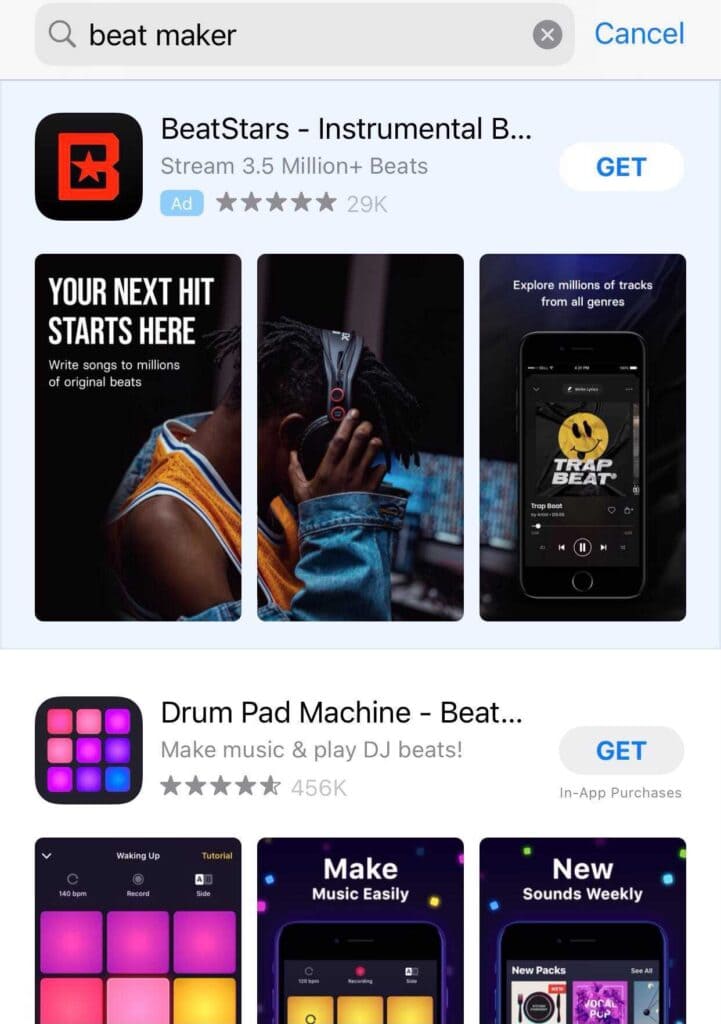
How to Set Up an Apple Search Ads Campaign
When creating an account to start keyword bidding, ASA best practices are to separate your keywords into four separate campaign types: Generic, Brand, and Competitor, and Discovery.
Generic Campaigns
Typically set on broad match, generic campaigns use keywords related to your app. For example, if you have a fitness app, you should include keywords like “fit” or “workout” in this campaign. The purpose of general campaigns is to reach high-intent app store visitors.
Brand campaigns
You’ll want to use brand campaigns to reach a more specific audience that’s searching in the App Store for your brand, to push re-installs, and for brand protection. Your keywords in this campaign will be those related to your brand name or variations of it. By bidding generously on your branded keywords, you’re making sure that competitors aren’t snatching this valuable space from you.
Competitor Campaigns
Set on exact match, competitor campaigns are used to target App Store users that are searching for competitors. Keywords for these types of campaigns include the names or name variations of your direct competitors.
Discovery Campaigns
You’ll want to set up a discovery campaign to discover new keywords or to find alternate keywords you’re not using in your other campaigns.
To best maximize Discovery campaigns (as seen in the picture by SearchAds.com below) new keywords from Discovery should be added as exact match keywords to the other three campaign types, and all keywords from Brand, Generic, and Competitor campaigns should be added as negative keywords in Discovery.
Apple Search Ads Best Practices
1. Prioritize Keyword Research
Do not downplay this step. Quality keywords are the cornerstone of successful ASA campaigns. Make sure you have plenty of long-tail keywords and keywords that have adequate search volume. You’ll want to pull keywords from several sources and cross-reference with Google and your App Store Optimization to create your shortlist of best keywords.
Also, remember that keyword selection and optimization is an ongoing process. There is a lot of trial and error, tweaking, and updating involved. This is one of the reasons that you’ll want to take advantage of automation to streamline the process, which brings us to our next point…
2. Use Automation
As we talked about in our ASA success story above—because ASA is a dynamic, ever-shifting channel, automation tools are a real game-changer. In terms of saving time and getting the best possible ad performance, automation is definitely the way to go!
3. Follow a Logical Campaign Naming Convention
If you’re running ASA campaigns in several markets, languages, and targeting different age groups, etc, it’s important to use the right campaign structure and name campaigns and ad groups logically. For example, if you have a fitness app called FIT, you’ll want to follow this setup:
- FIT-US-EN-Males-Generic
- FIT-US-EN-Female-Discovery
Final Thoughts
Apple Search Ads has shown its value as a paid acquisition user channel for several years now. And, given the current state of mobile app advertising and marketing, even more so now. We’ve shared some of our tips on how to make Apple Search Ads campaigns successful, but we know that it can be a challenging process that requires fine-tuning and expertise. If experts are what you need to get you on a path to ASA success, please don’t hesitate to contact us!
Related Articles
For Wellness apps, the most challenging approach is the conversion of the user from passive to active. [...]
In the realm of App Store Optimization (ASO) for iOS applications, a relatively untapped yet highly effective strategy [...]
In today's competitive app market, it's crucial for app developers and marketers to reach a wider audience and [...]

